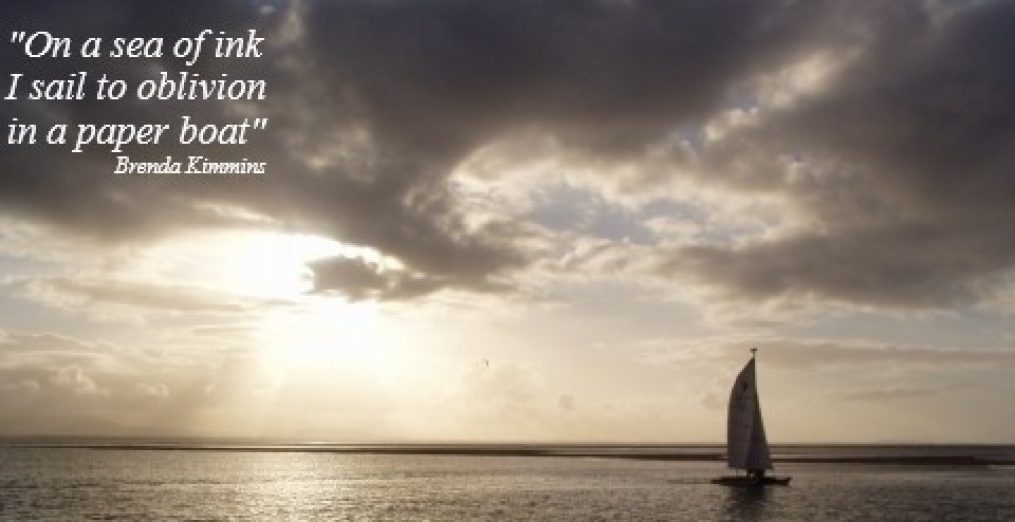There was not a cloud in the sky on Sunday evening. As I stood gazing upward the only sound I heard was the plaintive hooting of an owl in the woods opposite my house. It seemed to me that every star was visible in the blackness, and I was mesmerised as the shadow of the earth started to creep over the moon, gradually changing its shape. I watched and waited and tried to take photographs but soon abandoned that and just enjoyed the spectacle. This was the perfect end to a wonderful, and surprising, spontaneous day out.
I often get the urge to be near a river, a lake, a waterfall, or the sea. Any body of water will do. I assume this attraction is because I grew up by the River Tyne. I have the North Sea in my blood. Although I love the rolling hills, golden fields and honeyed stonework in the ancient villages of the Cotswolds, which is now my home, I do miss the coast.
One of my favourite poems remembered from schooldays is Sea Fever by John Masefield (1878–1967) and it sums up my feelings perfectly:
I must go down to the seas again, to the lonely sea and the sky,
And all I ask is a tall ship and a star to steer her by;
And the wheel’s kick and the wind’s song and the white sail’s shaking,
And a grey mist on the sea’s face, and a grey dawn breaking.
I must go down to the seas again, for the call of the running tide
Is a wild call and a clear call that may not be denied;
And all I ask is a windy day with the white clouds flying,
And the flung spray and the blown spume, and the sea-gulls crying.
I must go down to the seas again, to the vagrant gypsy life,
To the gull’s way and the whale’s way where the wind’s like a whetted knife;
And all I ask is a merry yarn from a laughing fellow-rover,
And quiet sleep and a sweet dream when the long trick’s over.
This particular Sunday the pull of the sea was stronger than usual so my husband and I set off for our nearest quiet coastline, which is at Burnham on Sea.
I love this little town so much; the wide sandy beaches, the working boatyard, the Victorian parks, the holiday camps, the seaside cafes and ice-cream sellers, the long flat promenade, the shortest pier in the country ~ and the Rivers Brue and Parrett that meet the Severn in the estuary that stretches between England and Wales. When we arrived it was lunchtime and the tide was out, so the beaches were almost deserted. But there was plenty to do. Apart from the usual things to see, there were assorted cowboys and cowgirls to be seen. Luckily for us it was Country and Western weekend in nearby Brean and you simply can not imagine how seriously the fans take this event unless you have seen it.
It is literally like walking through a goldrush town in the wild west of the 1850s. The men all look like cowboys, prospectors or sheriffs, wearing the regulation jeans, boots, fringed jackets and hats while toting holsters and pistols. The women are something else! Many were wearing very beautiful long dresses of the sort well to do wives of the wealthier businessmen or successful prospectors would wear I guess. They carried parasols and wore shawls. It was amazing ~ like walking into a Disney set, or being transported back to a totally different place and time.
The afternoon raced by, helped by fish and chips on the shortest pier in the country and a whippy ice cream by the slipway. The town started to get really busy and there was an air of expectation. I noticed that there were lots of jet skis down on the beach and a convoy of boats on trailers pulled by tractors heading for the boatyard. The coastguard was around and there was a lifeboat ready prepared for action. I was walking my little dog on the sea wall when I noticed the tide was coming in rather quickly.
The River Severn has the second highest tidal range in the world and I am used to seeing very high tides in Spring. But little did I know that this weekend was expected to be even higher due to a rare set of astronomical events happening together. Everyone knows that the tides are caused by the gravitational pull of the moon. And this weekend there was an extremely rare ‘super blood moon’ eclipse. The tide on the Severn was expected to be about 12 metres and it was coming in fast.
So after taking a few more photos, we reluctantly headed for home determining to set an alarm for 2.30 in the morning to watch the total eclipse of the moon. I noticed on the way home that the tidal River Avon, which meets the Severn at Avonmouth, was almost up to the top of the banks under the Clifton suspension bridge. I have never seen it so high. And the moon seemed much larger than usual. It looked golden and reddish at sunset, like a huge 3D ball suspended in the sky.
It reminded me of the paintings my pupils used to do to illustrate the C S Lewis story of The Magician’s Nephew. They used to put a plastic circle on their art paper and paint a colour wash all over the page. When the circle was removed it left a beautiful full moon that stood out from the background in 3D. Simple but effective!
My photos aren’t brilliant as I took them with my phone but they do show the changes that occurred during the day due to the tide.

















